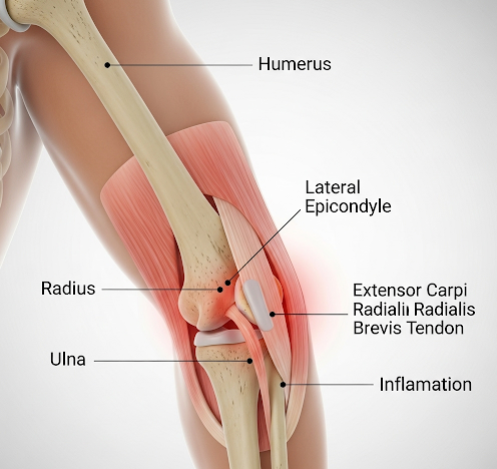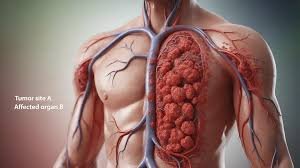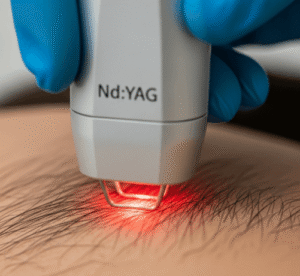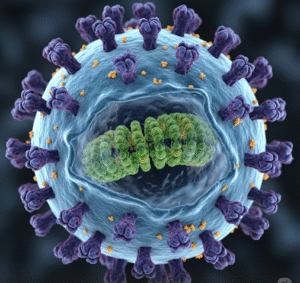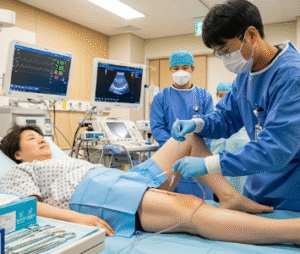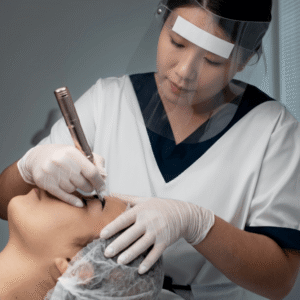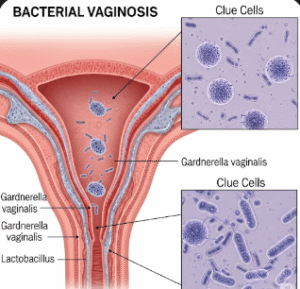Overview
Tennis elbow, medically known as lateral epicondylitis, is a common overuse injury that affects the tendons attaching to the lateral epicondyle, the bony prominence on the outside of the elbow. Despite its name, tennis elbow is not limited to athletes; it can occur in anyone performing repetitive gripping or wrist-extension movements. In South Korea, advanced orthopedic and sports medicine clinics provide comprehensive diagnostic evaluations, conservative therapies, minimally invasive procedures, and surgical options for patients suffering from tennis elbow, enabling pain relief, functional recovery, and prevention of recurrence.
What is Tennis Elbow?
Tennis elbow is a type of tendinopathy caused by microtears and degeneration in the extensor carpi radialis brevis tendon at the lateral epicondyle of the elbow. Repetitive strain or overuse of the forearm muscles leads to pain, tenderness, and reduced grip strength. While acute inflammation may occur initially, chronic cases are characterized by tendon degeneration rather than ongoing inflammation. In Korea, treatment approaches are tailored based on the severity, chronicity, and functional limitations of the patient, combining modern rehabilitation techniques with evidence-based medical therapies.
Symptoms
Symptoms of tennis elbow typically develop gradually and may include:
- Pain or tenderness on the outer side of the elbow
- Pain radiating down the forearm during gripping or lifting activities
- Weakness in the wrist and hand, affecting grip strength
- Pain when shaking hands, turning a doorknob, or holding a cup
- Stiffness in the elbow, particularly in the morning or after rest
- In chronic cases, thickening of the tendon and reduced range of motion
Early recognition of these symptoms allows Korean clinicians to implement treatment strategies that prevent progression and chronic disability.
Causes
Tennis elbow is caused by repetitive stress and overuse of the forearm muscles and tendons. Common causes include:
- Repetitive wrist extension and forearm supination movements
- Activities involving gripping or lifting, such as tennis, squash, racquet sports, painting, typing, or manual labor
- Poor technique during sports or occupational tasks
- Age-related degeneration of tendons, typically affecting individuals between 30 and 50 years old
- Previous elbow injuries that compromise tendon integrity
- Inadequate warm-up or conditioning before repetitive activity
In South Korea, orthopedic specialists perform detailed assessments to identify activity-related and biomechanical contributors to the condition.
Risk Factors
Certain factors increase the likelihood of developing tennis elbow:
- Participation in repetitive sports or occupational activities
- Age between 30 and 50 years, when tendons are less resilient
- Poor forearm muscle strength or endurance
- Improper technique or ergonomics in sports or work
- Previous tendon injury or elbow trauma
- High-stress occupational or recreational activities requiring repetitive gripping
Identifying these risk factors allows Korean clinicians to implement preventive strategies and minimize recurrence.
Complications
If left untreated, tennis elbow can lead to several complications:
- Chronic pain interfering with daily activities and occupational tasks
- Persistent weakness in the forearm and hand
- Reduced grip strength and functional impairment
- Tendon degeneration or microtears leading to long-term disability
- Compensatory movement patterns causing strain on other joints, including the shoulder and wrist
- Need for surgical intervention in refractory cases
- Psychological distress due to persistent pain and functional limitations
Timely treatment in South Korea significantly reduces the risk of these complications and promotes full recovery.
Prevention
Preventive strategies for tennis elbow focus on reducing tendon stress and strengthening supporting muscles:
- Proper technique: Ensuring correct form in sports and occupational activities
- Strengthening exercises: Forearm, wrist, and hand exercises to improve muscle endurance
- Stretching routines: Regular stretching of forearm muscles before and after activity
- Activity modification: Avoiding repetitive strain and allowing rest periods
- Ergonomic adjustments: Using appropriate tools and equipment to reduce stress on the elbow
- Gradual training: Avoid sudden increases in activity intensity or duration
- Warm-up and conditioning: Preparing muscles and tendons before physical exertion
Korean sports medicine clinics emphasize patient education and preventive programs to minimize the risk of tennis elbow.
Treatment Options in Korea
Treatment of tennis elbow in South Korea is comprehensive, combining conservative management, minimally invasive procedures, and surgical intervention if necessary:
Diagnosis:
- Clinical examination to assess tenderness, pain, and grip strength
- Imaging such as ultrasound or MRI to detect tendon degeneration or tears
- Functional assessment to evaluate forearm and elbow mechanics
Conservative Treatments:
- Rest and activity modification: Reducing or altering movements that aggravate the tendon
- Physical therapy: Stretching, strengthening, and eccentric exercises for tendon recovery
- Medications: NSAIDs or topical analgesics for pain and inflammation
- Bracing or splinting: Elbow straps or wrist splints to reduce tendon load
Minimally Invasive Interventions:
- Corticosteroid injections: Reduce inflammation and provide temporary pain relief
- Platelet-rich plasma (PRP) therapy: Promote tendon healing in chronic cases
- Ultrasound-guided needling or tenotomy: Stimulate healing and break down scar tissue
Surgical Treatments:
- Reserved for severe or refractory cases where conservative and minimally invasive therapies fail
- Procedures include tendon debridement, release, or repair depending on the extent of damage
- Postoperative rehabilitation ensures recovery of strength, flexibility, and function
Supportive Care:
- Pain management and ergonomic counseling
- Gradual return-to-activity programs under professional supervision
- Long-term follow-up to monitor tendon health and prevent recurrence
South Korea’s healthcare system integrates orthopedic expertise, physiotherapy, and modern rehabilitation technologies to provide effective management for tennis elbow, ensuring pain relief, functional restoration, and long-term tendon health.

